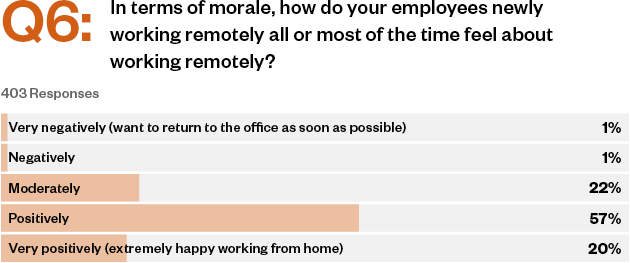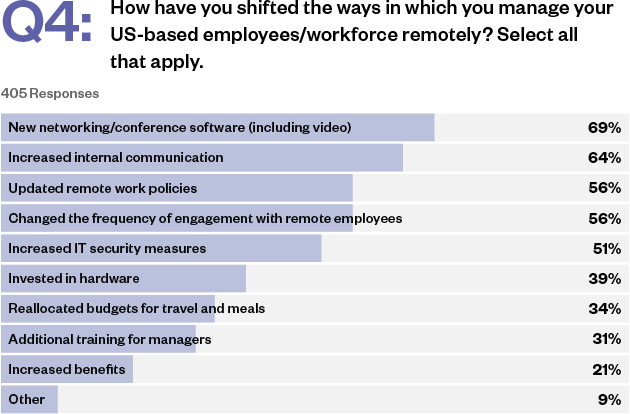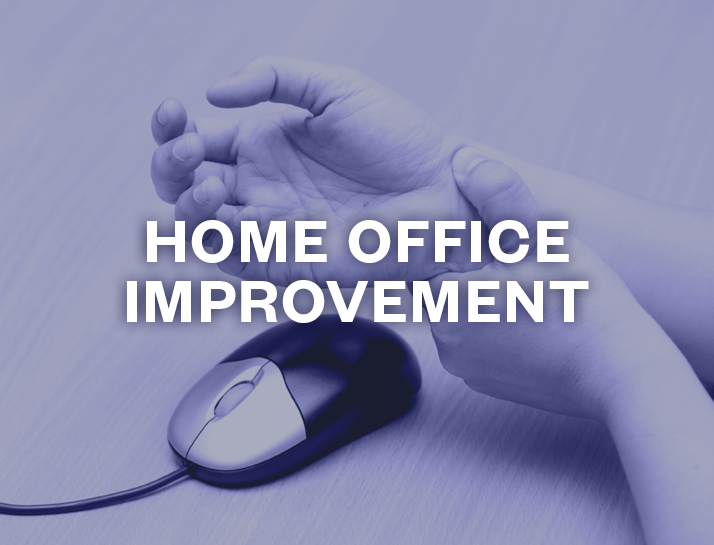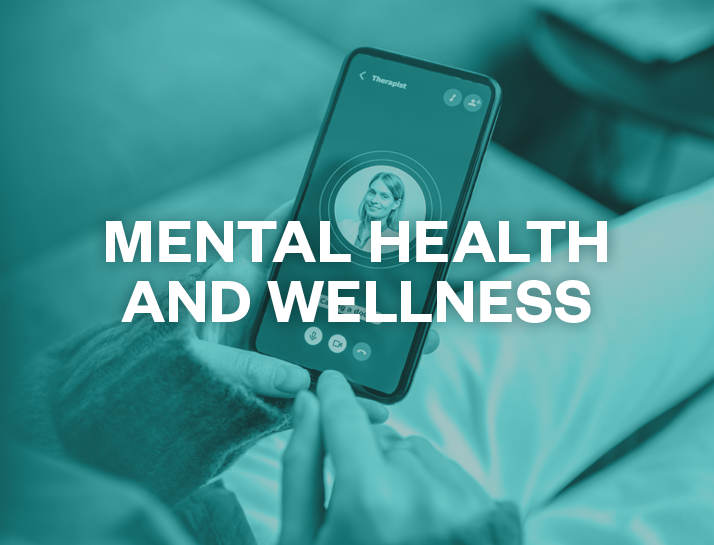Since March 2020, workforces and workplaces have undergone massive transformational shifts. Our survey, which garnered more than 400 responses, offers a glimpse into how employers think it's going. The answer may surprise you.
The Workforce Shift
We saw a stark change regarding how workforces shifted from in-person to remote working during the COVID-19 pandemic, and noticed some surprising employer perceptions regarding related productivity. More than 90% of respondents to our survey indicated that prior to the pandemic, less than half of their workforce worked remotely. During the pandemic, more than 30% of respondents indicated that 90% of their workforce or more worked remotely.
Despite the dramatic shift to remote work, more than 80% of respondents reported that the perceived employee productivity to be the same or higher than it was pre-pandemic. This is surprising; although more than 90% of respondents used to require most employees to report to work rather than work from home, more than 80% of these same respondents did not see a drop in productivity during this remote-work period. Most of the survey results were recorded in September, 2020, and as the pandemic wears on, productivity and video-conference fatigue may show a greater toll on employee productivity since September.
The charts below can be filtered by company size and industry so you can find out how your company compares.
Is the Glass Half-Full?
Of course an important aspect of our survey looked into employer perceptions of how employees seemed to be coping. Just as productivity seemed to be the same or better for most respondents, employee morale tied to remote work was viewed as surprisingly high. Despite the overall strain of the COVID-19 pandemic, 77% of the employer representatives responding to the survey perceived that employees were either positively inclined or very positively inclined toward working from home. In fact, 20% of respondents noted that employees seemed extremely happy to be working from home. Interestingly, only 2% of respondents believed that employees were negatively or very negatively inclined to work from home. Again, as the pandemic drags on, perhaps the glass that looked half-full is starting to look half-empty, but the results from September are nevertheless surprising in terms of perceived employee interest in working remotely and related productivity. Download the full survey results here.

Managing Remote Workers
Given the large numbers of workers conducting remote work, we asked employers whether their methods for managing remote employees has changed. Nearly 70% of respondents reported investment in upgrading video conferencing and networking capabilities, and more than 50% increased regular internal communications, and increased the frequency of regular employee engagement. Interestingly, more than 50% of respondents also noted a corresponding investment in IT security, and a nearly 40% made renewed investments in hardware and other technical support. A considerable percentage of respondents indicated that reallocation of expenses from travel and meal budgets made these investments possible. Download the full survey results here.

Morale Boosters
Following up on employee morale, we asked employers how they were addressing the well-being of employees and what kinds of support and offerings there they were providing. As expected, many employers increased their offerings and benefits incorporated in Employee Assistance Programs (EAP) and made significant efforts for increased communication through more regular updates and check-ins via email and through videoconference meetings. Employers also turned to video-conferencing happy hours, virtual wellness checks, and other efforts to create remote touch-points. A few made financial contributions toward outfitting home offices, and ensuring not only mental but ergonomic well-being while working remotely. Some of the more creative ideas include:
Virtual Water Coolers. Employers offered “virtual water coolers,” either via video conference or on the company intranet, allowing employees to share pictures of kids, pets, or themselves in their home offices.
Home Office Improvement. Many employers offered one-time stipends for home office equipment and tech, along with training on ergonomic home office setup.
You’ve Got Mail. Employers chose themed care packages around the idea of coffee breaks, or snacks that emphasize health and wellness shipped directly to employee homes.
Mental Health and Wellness. With many employers citing the stress of the pandemic, mental health and wellness benefits surged in popularity, from simple gestures such as wellness focused apps, emails, and articles, to virtual appointments with a live therapist.
Caring for Caregivers. As many employees found themselves juggling caregiving alongside work responsibilities, employers responded with flexible schedules to accommodate caregiving, increased care support, and support groups for caregivers.
Social Networking. With fewer opportunities for spontaneous socialization, many employers got more proactive in encouraging socialization, with virtual events like improv, escape rooms, and trivia, or outdoor events such as concerts, classic car shows, and sports that ensure physical distancing can be maintained.
Download the full survey results here.
We Can Help
If navigating the changes brought on by COVID-19 have you overwhelmed, we can help with with everything from creating a remote work strategy, to ensuring your managers have the right skills to manage remote teams.
-
Remote Workforces
We can help you get out of reactive mode when it comes to remote work issues.
-
Managing for Success
A critical set of tools and strategies for all those who manage remote teams.






